The June 2016 Through Positive Eyes workshop in Durban—epicenter of South Africa’s AIDS epidemic in the province of KwaZulu-Natal—attests to the uneven progress toward curbing HIV and AIDS in the country with the highest number of cases in the world. In 2016, 19% of South African adults between the ages of fifteen and forty-nine were HIV-positive. In KwaZulu-Natal, the percentage was even higher: 30%. In response, massive efforts have been made to bring KwaZulu-Natal’s epidemic under control. In Durban in 2016, for example, 89% of the 621,000 individuals infected with HIV were already receiving antiretroviral treatment. Leaving statistics aside, the participants in the Durban workshop demonstrated through their stories that too many young people, especially young women, are becoming infected with HIV at the very start of their sexual lives. This revelation underlines the need for gender-sensitive early sexual health education and intervention, not only in South Africa but around the world.
Durban’s AIDS Epidemic, as of 2016
- Number of people living with HIV
- 621,000 (8.2% of all South Africans living with HIV)
HIV Prevalence
- Adults (15–49 years)
- 22.6%
- Female sex workers
- 53.5%
- Men who have sex with men
- 48.2%
Treatment
- % of people living with HIV who know their HIV status
- 74%
- % of those needing treatment who are receiving it
- 89%
- % of those with undetectable viral load
- 67%
Two Conferences
Two international AIDS conferences have been held in Durban. In 2000, treatment activists demonstrated in the street against the HIV denialism of South African president Thabo Mbeki. By the time of the 2016 conference, South Africa had the largest treatment program in the world, with 3.4 million people receiving free antiretroviral therapy, largely in the public sector.
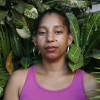
Elizabeth
I’m an outgoing person. I love ice cream. I love to dress up. I love high heels. I love to dance. And I am HIV-positive. At birth, I was taken away from my mother due to the fact she was mentally …
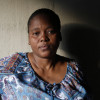
Jennifer
I was a beautiful young girl with a charming smile. All the men loved me. When I was nineteen, I had a strange feeling in my wrist. I went to the clinic to get treatment, and the doctor told me that …
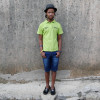
Sanele
I’m a Zulu man from a rural area of KwaZulu-Natal. You can’t be a real man in our culture without having more than one girlfriend. In general, being a man means having lots of children and not …
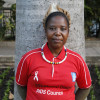
Silungile (Gogo)
I am a traditional healer. I am a mother and grandmother. I am an HIV and AIDS human rights activist. I work with young people and that’s where my passion is, especially for young girls. When I …
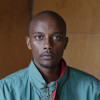
Simiso
Prior to actually finding out about my status, I was riding on the assumption that HIV is for old people. I looked at it as something far away from me. It was never even close to crossing my mind. I …
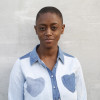
Thulile
I was born with the virus. I have been living with it for about twenty-five years now. I am strong. I am beautiful. I am a positive woman in all senses of that word. And I won’t let anyone …
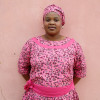
Xolisile
I was born and raised in Lindelani, a village in KwaZulu-Natal, by my grandma and my granddad. Due to the absence of my parents, I grew up in a dysfunctional family. I knew I wanted to finish school, …
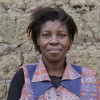
Yvonne
When I started working as a volunteer, and then as a cleaner, for the Gugu Dlamini Foundation, I was scared because I knew the story about what had happened to her. In 1998, a young South African …
Supporters
Through Positive Eyes in Durban was organized in partnership with the AIDS Foundation of South Africa. Major funding was provided by The Herb Ritts Foundation, with additional support from The Andy Warhol Foundation for the Visual Arts, Electronic Theatre Controls (ETC), The Ford Foundation, Gere Foundation, UNAIDS, and UCLA.